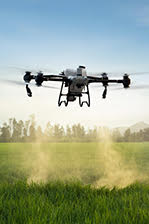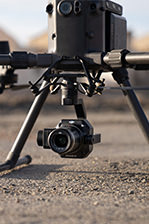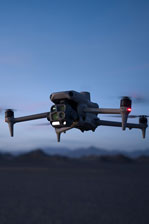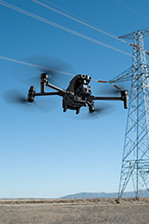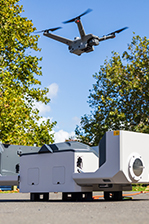DJI Goggles N3
Compatible With DJI Neo & DJI Avata 2
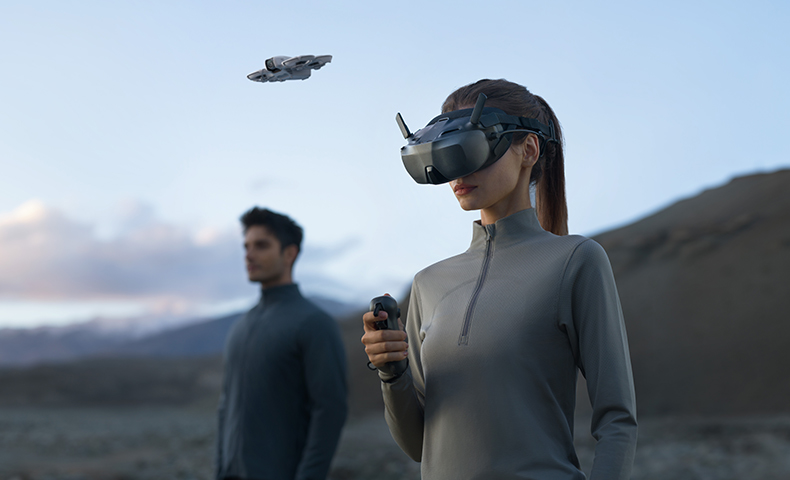
|
Immersive Flight Experience |
Ready to Use |
1080p Ultra-Wide Screen |
|
DJI O4 Video Transmission |
AR Cursor |
2.7-Hour Max Operating Time [1] |
Embrace the Pilot's Perspective
When paired with DJI Neo/DJI Avata 2 and DJI RC Motion 3, [2] DJI Goggles N3 lets you soar through the skies and enjoy an immersive flight experience, as if you were in the pilot seat. Activate the head tracking function to control Neo/Avata 2 with head or wrist movements, achieving seamless synergy between you and your drone.
Easily unlock the aerial acrobatics of Neo, and let Goggles N3 immerse you in the thrilling experience of 360° front/back flips, left/right rolls, and 180° drifts.
Unlock the Easy ACRO feature - Power Loop with Avata 2 with a single push (no need for advanced Manual mode controls with the DJI FPV Remote Controller series), and experience adrenaline-pumping excitement with DJI Goggles N3.
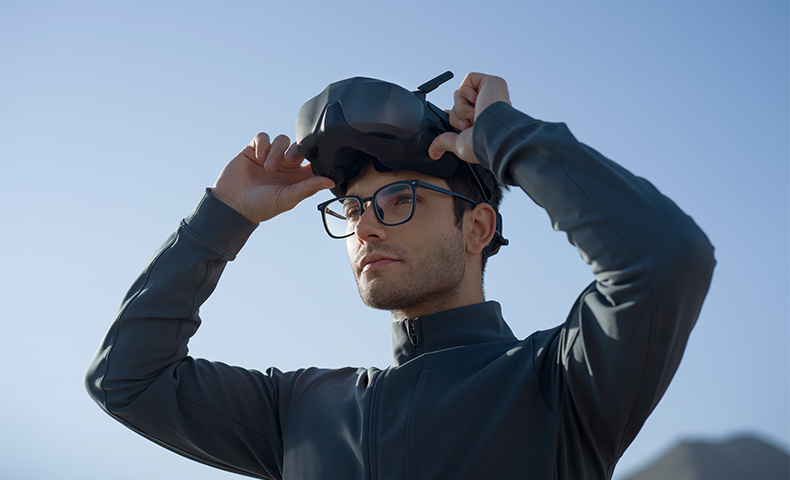
Ready to Use, Streamlined Creation
Roomy and Eyewear-Friendly Design
The roomy interior comfortably accommodates glasses, without needing diopter adjustments or lens installations. Simply put them on, and you can take off right away.
Integrated Design
The integrated headband and battery design balance the overall weight of the goggles, ensuring no pressure on your face for a comfortable fit.
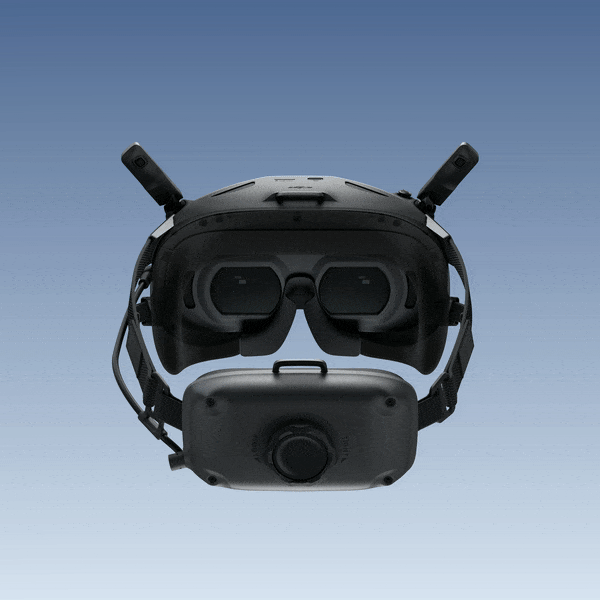
One-Tap Defogging
When fog builds up on the surface of the lenses, the defogging function effectively controls moisture by accelerating the internal fan speed to swiftly circulate air, making it ideal for changing temperatures and high-humidity conditions.
1080p Ultra-Wide Screen
DJI Goggles N3 has a full 1080p 60Hz LCD screen and an impressive 54° FOV. Enjoy stunning visuals with minimal dizziness as impactful aerial scenes come alive before your eyes.
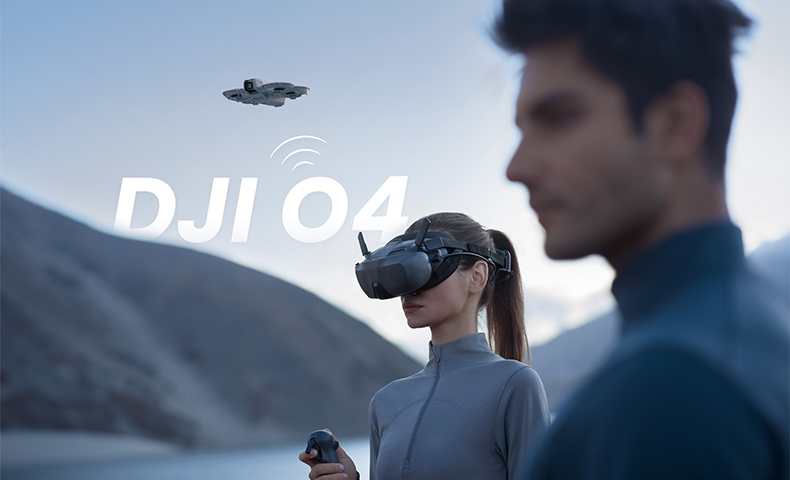
O4 FHD Video Transmission
Ultra-Low Latency, Stable Video Transmission
The advanced DJI O4 digital video transmission system adopts a 2T4R antenna design, offering exceptional anti-interference performance. Enjoy 1080p/60fps live feeds with a minimum latency of 31 ms [3] and a transmission range of up to 13 km. [4] The goggles automatically select the optimal frequency band between 2.4 GHz and 5.8 GHz [5] based on the environment. This ensures stable transmission so you can experience flying in real-time and get a buttery-smooth live view.
With a max video transmission bitrate of 60 Mbps [6] and SyncSmooth technology, video transmission from the skies to the ground is optimized, providing a smooth live view even when flying at a high speed.
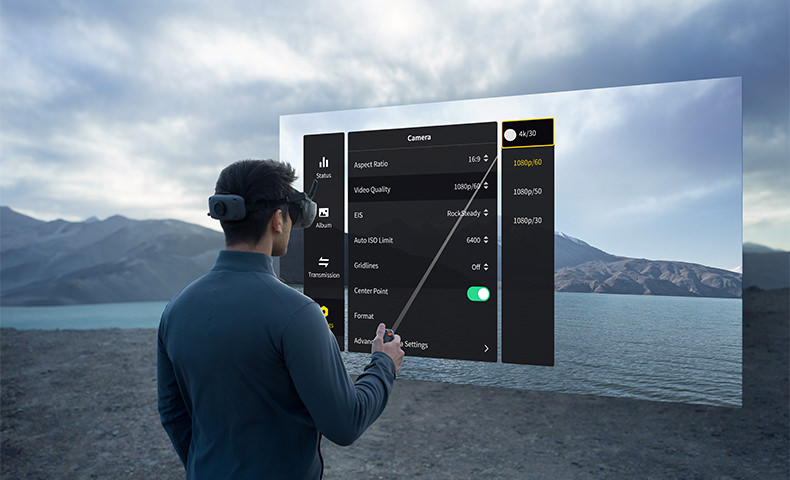
Smooth Flight, Powerful Operating Time
AR Cursor
DJI RC Motion 3 [2] can be used as an AR cursor before the aircraft takes off, or when the aircraft is braking or hovering. This allows you to effortlessly activate functions and adjust settings without taking your hands off RC Motion 3.
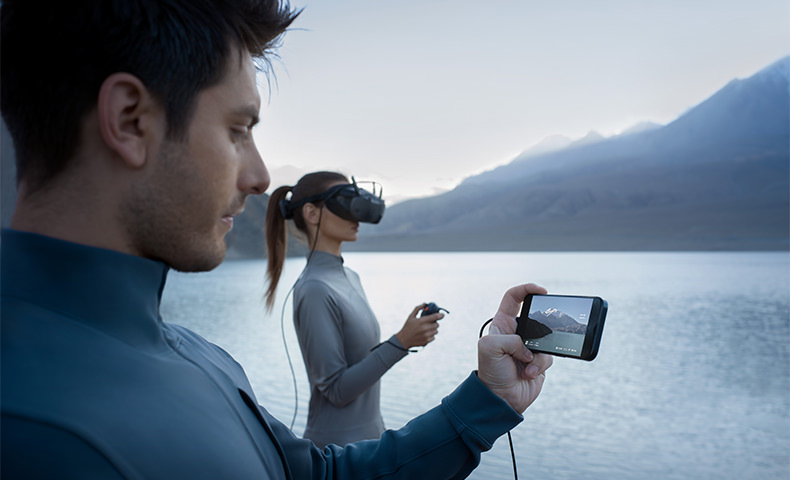
Real-Time Live Feed Sharing
Connect DJI Goggles N3 to your smartphone using a USB-C cable, and you can display a secondary live feed through the DJI Fly app. This allows others to check the live view in real-time, making sharing and teaching convenient and efficient.
Panorama Video Playback
Import panoramic videos onto a microSD card, and you can watch them through DJI Goggles N3. Enjoy a cinematic viewing experience in everyday life.
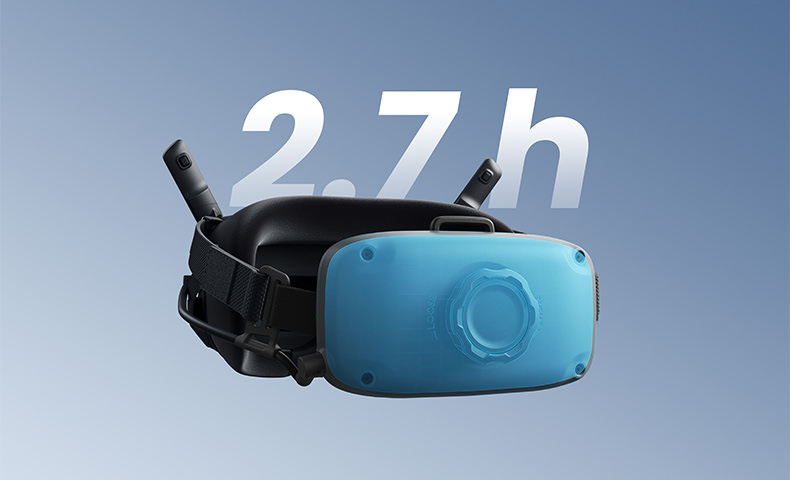
2.7-Hour Operating Time
A fully charged DJI Goggles N3 can last through the use of up to 13 DJI Neo batteries. [7] With a powerful 2.7-hour operating time, [1] you can unleash your creative passion and potential to the fullest.
DJI Goggles Series Comparison
|
DJI Goggles N3 |
DJI Goggles 3 |
|
One 1080p Ultra-Wide LCD Screen |
Dual Micro-OLED Screens |
|
Ready to Use With Glasses On |
Adjustable Diopters |
|
- |
Real View PiP |
|
USB-C Wired |
Wi-Fi Wireless/USB-C Wired |
|
Integrated Battery Design |
Integrated Battery Design |
|
DJI O4 Video Transmission |
DJI O4 Video Transmission |
|
Compatible Models DJI O4 Air Unit Pro DJI O4 Air Unit |
Compatible Models |
Notes
1. The 2.7-hour max operating time was measured at an ambient temperature of 25° C, screen brightness at 6, connected to the DJI Avata 2 aircraft, video transmission set to 1080p/100fps, Head Tracking off, and the goggles' battery fully charged and not supplying power to external devices such as smartphones.
2. DJI Neo, DJI Avata 2, and DJI RC Motion 3 are sold separately.
3. Measured when paired with DJI Avata 2, using 1080p/100fps video transmission, and in an open outdoor environment without interference. The 58ms minimum latency was measured when paired with DJI Neo, using 1080p/100fps video transmission, and in an open outdoor environment without interference.
4. Measured when paired with DJI Avata 2, compliant with FCC standards, in an open outdoor environment without interference, and subject to the aircraft's max flight distance. Under the same test conditions, when paired with DJI Neo, the transmission distance is 10 km (FCC) and 6 km (CE/SRRC/MIC).
5. The 5.8 GHz frequency band is currently banned in certain countries/regions. Always check and strictly abide by local laws and regulations before flying.
6. Measured when paired with DJI Avata 2 in an open environment without interference. The video transmission bitrate varies by operating environments. Under the same test conditions, the max bitrate is 50 Mbps when paired with DJI Neo.
7. Measured with DJI Neo paired with DJI RC Motion 3 during steady flight at constant speed in Normal mode.
8. The 3-hour max operating time was measured at an ambient temperature of 25° C, screen brightness at 4, connected to the DJI Avata 2 aircraft, video transmission set to 1080p/100fps, Head Tracking off, Real View off, and the goggles' battery fully charged and not supplying power to external devices such as smartphones.
9. Measured when paired with DJI Avata 2 in an open environment without interference. The video transmission bitrate varies by operating environments.
Product Specifications
Goggles
Model: TKGSM
Weight: Approx. 536 g (battery and headband included)
349 g (battery and headband excluded)
Dimensions: With antennas folded: 193×163×103 mm (L×W×H)
With antennas unfolded: 206×163×132 mm (L×W×H)
Screen Size (single screen): 3.5 inches
Resolution (single screen): 1920×1080
Refresh Rate: Up to 60 Hz
Interpupillary Distance Range: No interpupillary distance adjustment required, ready to use immediately.
Diopter Adjustment Range: Diopter adjustment not supported, can be used with personal glasses.
FOV (single screen): 54°
Video Recording Format: MOV (video format: H.264)
Supported Video and Audio Playback Formats: MP4, MOV (video coding formats: H.264, H.265; audio formats: AAC, PCM)
Panoramic Video: Spherical 2D panoramic videos
Max Video Specification: 4K/60fps
Real View Display: Real View not supported.
Operating Temperature: -10° to 40° C (14° to 104° F)
Power Input: Built-in battery
Supported SD Cards: microSD (up to 512 GB)
Recommended microSD Cards: Lexar Professional 1066x 64GB U3 A2 V30 microSDXC
Lexar Professional 1066x 128GB U3 A2 V30 microSDXC
Lexar Professional 1066x 256GB U3 A2 V30 microSDXC
Lexar Professional 1066x 512GB U3 A2 V30 microSDXC
Kingston CANVAS Go! Plus 64GB U3 A2 V30 microSDXC
Kingston CANVAS Go! Plus 128GB U3 A2 V30 microSDXC
Kingston CANVAS Go! Plus 256GB U3 A2 V30 microSDXC
Kingston CANVAS Go! Plus 512GB U3 A2 V30 microSDXC
Video Transmission
Video Transmission: O4
Operating Frequency: 2.400-2.4835 GHz
5.150-5.250 GHz
5.725-5.850 GHz
Operating frequency allowed varies among countries and regions. Refer to local laws and regulations for more information.
Transmitter Power (EIRP): 2.4 GHz:
< 30 dBm (FCC)
< 20 dBm (CE/SRRC/MIC)
5.1 GHz:
< 23 dBm (CE)
< 21 dBm (FCC)
5.8 GHz:
< 33 dBm (FCC)
< 30 dBm (SRRC)
< 14 dBm (CE)
Latency: With DJI Avata 2:
1080p/100fps video transmission quality: Minimum 31 ms
With DJI Neo:
1080p/60fps video transmission quality: Minimum 58 ms
Measured in an open, outdoor environment without interference or obstructions. Actual data varies with different drone models.
Max Transmission Distance: With DJI Avata 2:
13 km (FCC)
10 km (CE/SRRC/MIC)
With DJI Neo:
10 km (FCC)
6 km (CE/SRRC/MIC)
Measured in an open, outdoor environment without interference or obstructions and represents the farthest communication range under each standard. The actual max transmission distance during flight is limited by the drone's max flight distance. Always pay attention to RTH reminders on the live view during your flight.
Max Video Bitrate: With DJI Avata 2: 60 Mbps
With DJI Neo: 50 Mbps
Measured in an open, outdoor environment without interference or obstructions. Actual data varies with the operating environment.
GFSK
Operating Frequency: 2.400-2.4835 GHz
Transmitter Power (EIRP): < 26 dBm (FCC)
< 20 dBm (CE/SRRC/MIC)
Battery
Dimensions: 120×71×44 mm (L×W×H)
Capacity: 2450 mAh
Voltage: 6.33-8.4 V
Type: Li-ion
Chemical System: LiNiMnCoO2
Energy: 17.28 Wh
Charging Temperature: 5° to 45° C (41° to 113° F)
Max Charging Power: 5 V/3 A (charging when powered off)
Runtime: 2.7 hours
The 2.7-hour max operating time was measured at an ambient temperature of 25° C (77° F), screen brightness at 6, connected to the DJI Avata 2 aircraft, video transmission set to 1080p/100fps, Head Tracking off, and the goggles' battery fully charged and not supplying power to external devices such as smartphones.
In the box
DJI Goggles N3 × 1
DJI Goggles N3 Foam Padding × 1
DJI Goggles N3 Top Headband × 1
Documents (Quick Start Guide, Safety Guidelines, and DJI Logo Stickers) × 1
WHY BUY FROM US?
By buying from Ferntech, you'll have the confidence that you are dealing directly with New Zealand's leading drone experts. Our staff are knowledgable drone pilots who offer expert advice, trusted support and superior specialist service. Only through us will you receive a full New Zealand warranty, phone and email support, and access to our certified Repairs Centre with DJI-qualified drone technicians. And we guarantee that we will have the best prices on the market — if not let us know and we will match any price (conditions apply).
Warranty Details
What are the main differences compared with other DJI goggles?
Compared with DJI Goggles 3, DJI Goggles N3 offers a more spacious internal design that accommodates personal glasses, allowing users to wear them directly without needing to adjust the diopter or install additional lenses. It also features a single 1080p ultra-wide screen with a 54° field of view, reducing the likelihood of dizziness and providing an immersive visual experience.
Compared with DJI Goggles Integra and DJI Goggles 2, DJI Goggles N3 not only incorporates a single 1080p ultra-wide screen and a ready-to-use design but also features DJI's latest O4 FHD video transmission technology. It offers an extended battery life of up to 2.7 hours* and includes additional features such as AR Cursor** and One-Tap Defogging. It is compatible with more of DJI's latest drones and remote controllers, enhancing the overall user experience.
* The 2.7-hour max operating time was measured at an ambient temperature of 25° C (77° F), screen brightness at 6, connected to the DJI Avata 2 aircraft, video transmission set to 1080p/100fps, Head Tracking off, and the goggles' battery fully charged and not supplying power to external devices such as smartphones.
** This feature requires the DJI RC Motion 3.
Who is this product suitable for?
If you need a lightweight and comfortable pair of goggles that can be worn without removing personal glasses, and you want an immersive flight experience with easy live feed sharing, then the entry-level DJI Goggles N3 is your ideal choice.
Which aircraft and remote controllers are compatible with this product?
DJI Goggles N3 is compatible with DJI Avata 2 and DJI Neo, and must be used in conjunction with the DJI RC Motion 3 or DJI FPV Remote Controller 3.
For a smoother first-person view (FPV) experience, it is recommended to select a shooting frame rate of 50fps or higher.
How do I use this product with astigmatism, nearsightedness, or farsightedness?
You can use DJI Goggles N3 directly while wearing personal glasses or contact lenses. If you are wearing personal glasses, gently open the foam padding of the goggles from both sides before putting them on. For detailed instructions, refer to the user manual.
Does this product support interpupillary distance adjustment?
No.
Can I replace the foam padding?
Yes.
Can this product be charged by third-party power sources?
Yes. Since DJI Goggles N3 has a built-in battery, you can connect it to a power bank through the USB-C port and even use it while charging.
What precautions should be taken when using this product?
When using DJI Goggles N3, keep the lenses away from direct sunlight exposure to avoid irreversible damage.
Does this product support motion control or head tracking?
Yes, but a DJI RC Motion 3 is required.
Does this product support AR Cursor?
Yes, but a DJI RC Motion 3 is required.
Does this product support Real View?
No.
Does this product support real-time live feed sharing?
Yes. The steps are as follows:
1. Use a USB-C to USB-C data cable to connect the USB-C port of the goggles to your smartphone.
2. Open the DJI Fly app and tap GO Fly in the lower right corner to view the live feed on your smartphone.
Does this product support video recording with a memory card installed? What is the resolution and frame rate?
Yes. DJI Goggles N3 can record its screen during the flight (and can include OSD and other information). The resolution is 1920×1080, and the max recording frame rate is 60fps. The recording frame rate adapts automatically based on the camera's set frame rate and cannot be manually adjusted by the user. The specific strategy is as follows:
1. For camera settings of 60fps or lower, the recording will match the camera's frame rate, such as 60, 50, 48, or 30fps.
2. For camera settings higher than 60fps, the recording frame rate will be half of the camera's frame rate. For example, a 100fps camera setting will result in a recording frame rate of 50fps, and a 120fps camera setting will result in a recording frame rate of 60fps.
Can the OSD information displayed on the screen be turned off?
No.
Does this product support analog video transmission?
No.
Does this product support flight simulators?
No.
Does this product support playing videos?
Yes, it supports playing videos from a memory card.
Supported video formats on the memory card: MP4 and MOV (video coding formats: H.264, H.265; audio formats: AAC, PCM).
Does this product support playing panoramic videos and 3D videos?
It supports spherical 2D panoramic videos but does not support 3D videos.
Panoramic videos are supported up to a max resolution of 4K/60fps.
Does this product support playback of photos or videos?
Yes. After inserting a memory card into DJI Goggles N3, you can view photos or videos by opening the Album in the goggles' menu.
Spherical panoramic photos are not supported for viewing.
How can I connect this product to a smartphone or computer?
The goggles support wired connections to smartphones and computers.
Only standard USB-C data cables and MFI-certified Lightning cables are supported. When connecting to a computer, it is recommended to enable OTG Wired Connection to Computer in the goggles' menu under Settings > About to avoid recognition issues. Remember to disable the OTG Wired Connection feature when not connected to a computer to prevent any impact on flight performance. When connecting to a smartphone, it is recommended to use a USB-C to USB-C cable. If the smartphone is not recognized, you can enable OTG Wired Connection to Mobile Device in the goggles' menu under Settings > About to resolve the issue. Remember to disable the OTG Wired Connection feature when not connected to a smartphone to prevent any impact on flight performance.
Does this product support HDMI output or HDMI input?
DJI Goggles N3 does not have an HDMI port and therefore does not support direct HDMI input or output. However, if you have a DJI RC Pro, you can use it to relay the signal. Connect Goggles N3 to the RC Pro via a USB-C to USB-C data cable, and connect the RC Pro to another display device via an HDMI data cable. Then, enable the FPV Live feature in the Settings > Display menu on the RC Pro. Open the DJI Fly app, and you can then get live feeds from Goggles N3 on the connected display device via the RC Pro.








